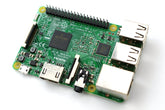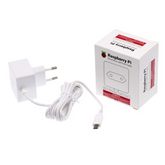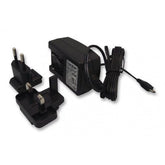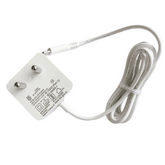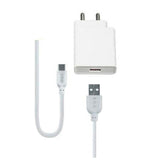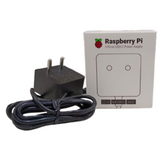How do I Power My Raspberry Pi
Summary
Are you looking for a way to power your Raspberry Pi? If the answer is Yes! then check out this blog which takes you a closer look at the different power options available for your Raspberry Pi, and helps you determine which one is best for your particular project. Whether you're a beginner or an experienced Pi user, you'll find plenty of useful information to help you power up your Pi and get started on your next project.
Introduction
Hello! Welcome to this article. If you recently bought a Raspberry Pi and trying to figure out how to power it on? Which all different connectors on the board can be used for powering or can we use GPIO for powering the RPi? Can we supply extra current or voltage than rated? then this is the right blog for you. Here we will answer all these questions and a lot more by looking at different ways to power Raspberry pi. So stay tuned and let's get started!
Raspberry Pi power is an important factor for anyone interested in tinkering with the system. Powering a Raspberry Pi can be done several ways, but some offer more convenience than others. The most obvious solution is to use a USB cable connected to your laptop or PC; however, this involves being tethered to one location while you work on your project.
An alternative approach would be using wall adapters and micro-USB cables which provide better portability since they are powered by standard AC outlets instead of requiring access to an active computer at all times. Another popular option is powering it via PoE (Power over Ethernet); presuming that has been built into the Raspberry Pi setup though hardware add-ons like HATs or cape boards as needed before making any connections from upstream devices such as switches or routers could prove beneficial here too onwards. All these aspects need careful consideration when looking at how best handle getting juice up for those innovative projects!

Different modes to Power Raspberry Pi
1. Using USB connector on RPI Board
This is the recommended and most commonly used way to power the Raspberry Pi.
2. Micro USB
You can use a Micro USB type cable to give power supply to the board. This connector is used on older versions of RPi.
3. TYPE-C
TYPE-C connector is used on the latest versions of RPI i.e models 4 and 400. The specialty of type C compared to micro USB is that it is a reversible connector ( can be connected in any orientation) and can be used for faster data transfer and powering the RPi.
For best performance and stable supply use the official Raspberry pi power adapter from our robocraze store for powering Rpi 4 or 400. It gives a stable 5V and 3 A to the board.

Make sure you provide the recommended power supply as provided in the below table for different Rpi models.
|
Family |
Model |
Voltage |
Recommended Current |
Connector |
|
Raspberry Pi |
A, A+ |
5 V |
700 mA |
Micro USB |
|
Raspberry Pi B+, Rasberry Pi 2 B |
B |
5 V |
1.8 A |
|
|
Raspberry Pi Zero |
Zero, W/WH,2W |
5 V |
1.2 A |
|
|
Raspberry Pi 3 |
A+,B, B+ |
5 V |
2.5 A |
|
|
Raspberry Pi 4 |
B,400 |
5 V |
3.0 A |
USB C |
|
Raspberry Pi Pico |
1-8 - 5.5 V |
- |
Micro USB |
2. Using onboard GPIO Pins
Yes, you can use onboard 5V and GND pins for powering the Rpi. PINs 2 and 4 correspond to 5V. PIN 6 is the ground pin. Connect the PSU power wires accordingly to power the RPi. Note that you would need a stable 5V and 3 A power supply (in the case of Rpi 4) since there is no protection circuit added in case of power fluctuations

3. Power over Ethernet (PoE)
There is one more way through which you can power your RPi i.e by providing a power supply through the ethernet port. But for doing this you will require an extra shield called Raspberry Pi PoE HAT.

PoE is a networking method through which we can send power over an existing data connection on a network cable.

How to use the RPi PoE hat?
To use this just connect the shield on RPI and you are ready to go!

After connecting just plug in the ethernet and power the Rpi!! That's it!
Note: There should be a power supply connected to the network adapter from which we are taking the ethernet connection.
What if your RPi still doesn’t work?
Check if your power supply wire is working properly. Also, check with a multimeter if the PSU is providing the required amount of Power to the Rpi. If you are using a mobile phone or cable charger it might not be providing the required amount of power. The best way is to use the official Raspberry PI adapter.
Check if you have plugged in your flashed Operating System SD card. If you haven't installed OS then go to the Rpi official website and follow the steps for installing the Operating system on an SD card. This should solve the problem.
If the SD card is corrupted( unable to format) then you will need to get a new one. If there is no video output check the HDMI cable if it's working.
Conclusion
In this article, we have seen how to power the Raspberry Pi board using different methods. If you have any doubts feel free to comment.
If you appreciate our work don't forget to share this post and leave your opinion in the comment box.
Please do check out other blog posts about Turning an led with raspberry pi , Ultrasonic sensor with raspberry pi 4 , How to use Raspberry Pi as node in LoRAWAN , NODE TO NODE COMMUNICATION ON LORA WITH RASPBERRY PI 4 and RASPBERRY PI TIPS & TRICKS
Make sure you check out our wide range of products and collections (we offer some exciting deals!)



